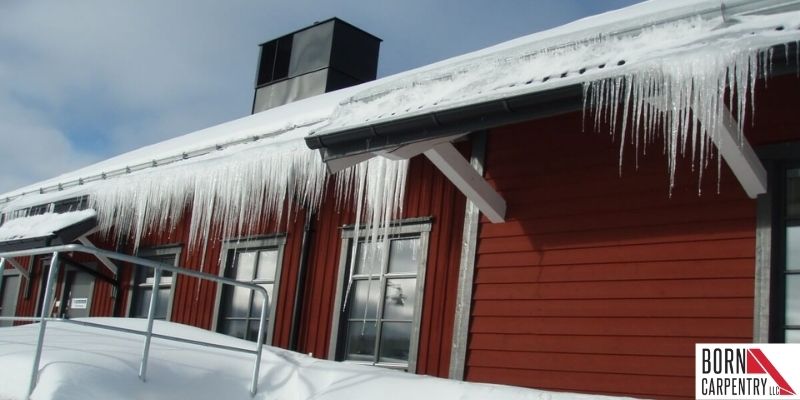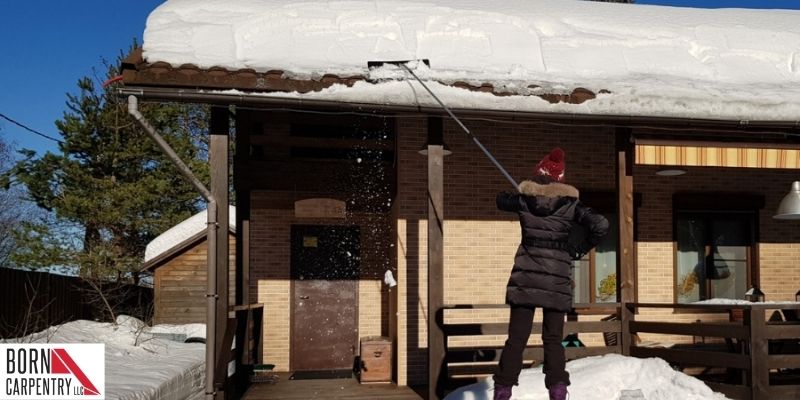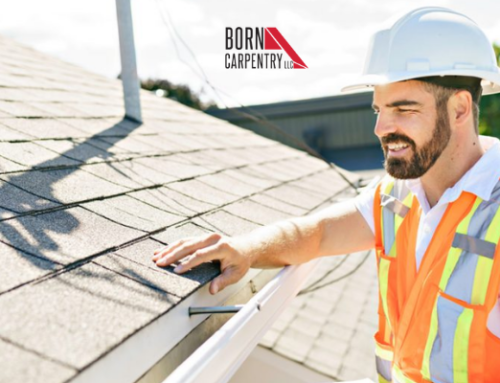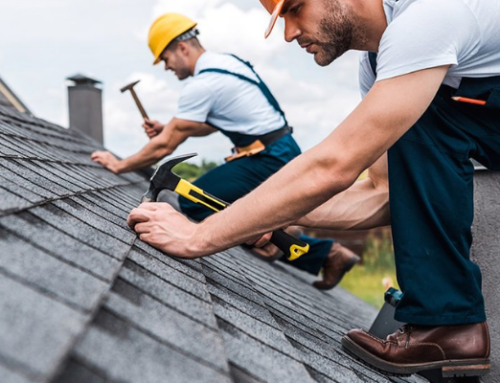Ice dams are a familiar sight to homeowners in snowy climates. An ice dam is a mass of ice that gathers along your roofline’s lower edge. It usually overhangs the edge of your home. When the ice dam is severe, the structure of your roof’s eaves can be compromised. If ignored, ice dams can cause serious damage to your home’s exterior paint, gutters and roof.
How Roof Ice Dams Are Formed

Ice dams are formed under specific freezing and snowy conditions. Snow will accumulate on your roof during snowfall. The heat from the attic and your home can cause the lower part of the snow to melt. This melted snow trickles to the eaves down from your roof. This allows it to get farther away from the heat of your home and attic.
The ridges and eaves of your home are colder than other parts of your roof. This is because they extend away from your home. They are further away from the ambient indoor heat and stay cold with the outside temperature. As a result, the melted snow water refreezes at the very edge of the roof. This refreezing causes ice to form. An accumulation of this over time leads to ice dams.
Tips On Preventing The Formation Of Roof Ice Dams
To keep your home in good condition during winter, you must address some maintenance and repair tasks. Ice dams can be very harmful. They can result in severe damage if not prevented. It is therefore important that you as a homeowner take steps to avoid such issues.
Here are some tips on how you can prevent roof ice dams from forming:
1. Insulation
One good means of preventing ice dams is insulation. You can achieve this by insulating the ceiling in living spaces on the inside surface of the roof or below the attic. Additionally, you should insulate the floor of the attic if your attic is an open one. Also, if you have a finished ceiling that is directly against the roof, you should insulate the rafter spaces. This should be done in combination with ventilation baffles. All of these methods will prevent the rise of heat up to the deck of your roof. This way, the snow on your roof will not melt due to the heat escaping from the inside.
Furthermore, another thing as important as insulating the living space below the attic is sealing the air channels too. Gaps around chimneys and plumbing pipes can cause heat to flow significantly from the spaces below to the attic. As a part of your insulation strategy, ensure that you seal these gaps.
Not only does comprehensive insulation of the living spaces below your attic prevent the formation of ice dams, but it also helps in reducing energy costs.
2. Getting Rid Of Heat Sources In Your Attic
There is a possibility that there are some sources of heat in your attic that you have not yet noticed. Perhaps older recessed lights stretch up into your attic’s floor. These lights can radiate heat, so replace the old light fixtures. It will help if you replace them with modern, cooler recessed lights.
Furthermore, HVAC ductwork that is not insulated can also be a possible source of heat that can cause the melting of snow on your roof. Other sources may include kitchen exhaust fans, improperly vented bathrooms or vents from clothes dryers.
To help reduce the amount of heat that goes into your attic, ensure that you work on all of these areas if you have them. Wrapping these sources in fiberglass insulation will help minimize the thermal transfer that occurs.
3. Using Electric Heat Cables
The best ways of preventing ice dams are improving ventilation and minimizing heat sources against the inside surface of your roof. However, you can also install electric heat cables if these methods are not practical. The installation of heat cables should be along the edge of your gutters and roof lines.
The heating cables, when looped in a zig-zag pattern along these areas, will prevent the cooling of the melting ice. This way, the melted ice water will not freeze when it gets to the eaves. The water that melts will flow to the ground rather than freeze and cause ice dams.
Although the heat cables on your roof may look unattractive, they will prevent the formation of ice dams. However, you should know that there is a risk that comes with mixing electricity and water. Ensure that you always maintain the heating cables and precisely follow the manufacturer’s directions to remain safe.
4. Clear Gutters And Roof Of Snow

Clearing your gutters and roof of snow is another way by which you can prevent ice dams. This requires dedication, but you must do it if your roof is prone to ice dam formation. Ensure that you take time to get rid of the snow on your roof every time there is a snowfall. This will prevent the melting of the snow. However, you must be careful when getting rid of the snow that accumulates on your roof. Getting the snow off your roof is risky if you are inexperienced. You may damage your roof or accidentally rip off shingles.
Conclusion
Ice dams can be a menace to your roof if they’re not controlled. To prevent the formation of ice dams on your roof, follow the aforementioned tips. Need roof work done? Want help getting rid of ice dams? Call Born Carpentry of Andover, Minnesota, at 612-747-8003.






